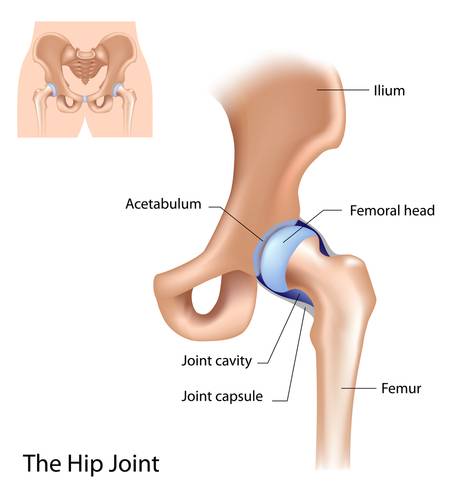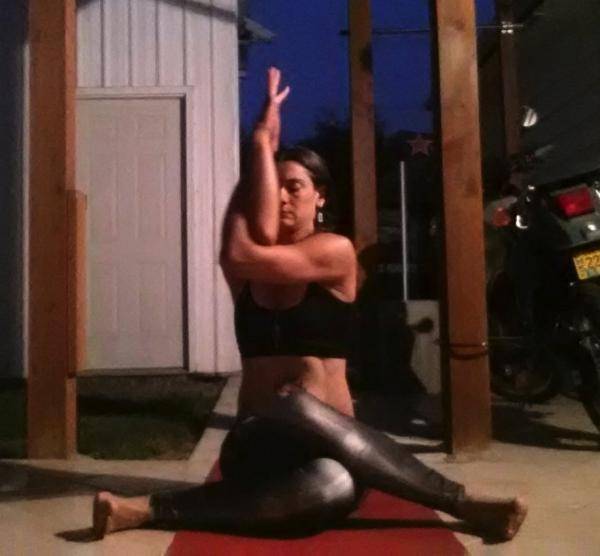“My goal is to do a handstand.” As a yoga teacher, I hear that comment at least once a week, and I try my best to reply with a smile and helpful tips. I understand the appeal. I also crave the freedom that comes with being able to flip upside down at any time of day in any place. The videos of physically able yogis transitioning in and out of handstands with incredible control amaze me (even if I don’t always understand why we have to be in our panties to film these videos).
The upside of the handstand craze is it draws hundreds of new yogis to the practice, and some of them will discover the amazing benefits of the whole path of yoga, not just handstands. The downside of this craze is an overemphasis on strength in just a few parts of the body, denying the body the complete benefits of yoga and at times putting the body at risk for injury or pain. Here’s why I advocate staying on your feet through most of your practice.
How Hips and Shoulders Work
The two largest and most mobile joints in the body are the hip joint and the shoulder joint. They are both ball-in-socket joints, providing for a fuller range of motion.1 Because human beings became bipedal at some point in our history, the hip joint has evolved to be more stable than the shoulder joint. If we go with a “form follows function” theory, the shoulder has a wide range of mobility because we rely on our arms and hands for dexterity, not so much for strength. This at times does leave the shoulder unstable, and one key goal of yoga practice is to stabilize the shoulder.2 Similarly, because we rely so much on our hips for weight bearing, they tend to become tight, and yoga aims to open the hips.

The Limitations of Our Joints
That being said, we would never want to open the hips so much they would become unstable. Though I don’t necessarily agree with all of his points and theories, William J. Broad took on the topic of excessive flexibility (hyper-extension) in one of his yoga articles for the New York Times. An orthopedic surgeon interviewed for the article, Bryan T. Kelly, was quoted as saying, “If (hip opening)’s done without an understanding of the mechanical limitations of the joint, it can mean trouble.” I applaud this comment. It is important to understand the mechanical limitations of our body’s joints, and I wish we applied this more to the limitations of the shoulders.
We want to stabilize the shoulder joint, and vinyasa-style practice, which requires multiple push up-like actions each class, is one way to help build shoulder strength. Poses such as down dog, dolphin and – of course – handstand also strengthen the shoulders. I’ve often heard the most common thing to injure in yoga is the shoulder (sound familiar, CrossFitters?).4 While I cannot find any studies pointing to this fact, as a teacher, my personal experience would validate the claim. When I ask students about injuries prior to class, they often say, “Well, I think I did something to my shoulder the other day.” My yoga school emphasizes a simple fact: our shoulders are not designed to do thirty to forty chaturanga push ups seven days a week. If we ask this of them, we may not be understanding the mechanical limitations of the joint.

Finding Balance
Simply put, our shoulders are not our hips. If we put all of our body weight on our arms routinely throughout a week, month, or year of practice, we risk losing the mobility our shoulders are designed to have. I’ve seen good friends develop strong handstand practices only to lose their ability to bind their arms in twists or shoelace pose (gomukasana, pictured right). Ultimately, the goal of yoga is to balance stability and mobility. This should be the goal of any true lifelong fitness regimen. What’s the point of doing muscle ups if you cannot reach your hands over your head?
I don’t think we’re going to get away from the handstand craze or the muscle up craze. They just look too cool. But if your goal in 2014 is to do a handstand, I’d encourage you to try this:
- Six days a week work on opening your shoulders and understanding external rotation of the joint.
- Limit your chaturanga push ups to no more than fifty in a given week.
- One day a week, without tiring your shoulders first, work on your alignment in handstand.
You may be absolutely amazed at how much easier the handstand posture is when you can really get your shoulders into external rotation, using your laterals and core to work the pose. Take a photo, make it your Facebook cover (have you seen my Facebook cover photo?), relish in your success, but relish just as much in knowing you are caring for your joints.
References:
1. Long, Ray., “The Key Muscles of Yoga” (Bandha Yoga Publications, 2006), 22-24.
2. Kishner, Stephen., “Shoulder Joint Anatomy.” Medscape, published March 8, 2013.
3. Broad, William J., “Women’s Flexibility Is a Liability (in Yoga).” The New York Times, published November 2, 2013.
4. Rovig, Meghan., “Why Do I Keep Jacking Up My Shoulder? A CrossFitter’s Dilemma.” Pulse Beat Fit, published June 24, 2013.
Photos 1 & 2 courtesy of Shutterstock.
Photo 3 courtesy of Willow Ryan.






